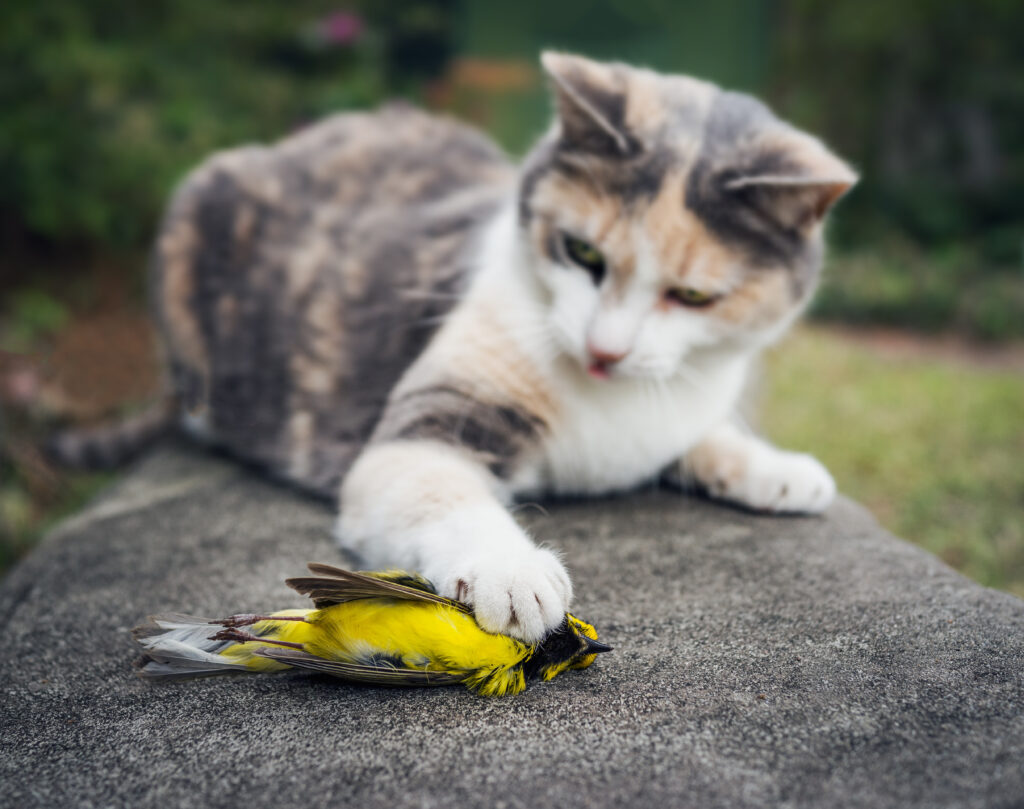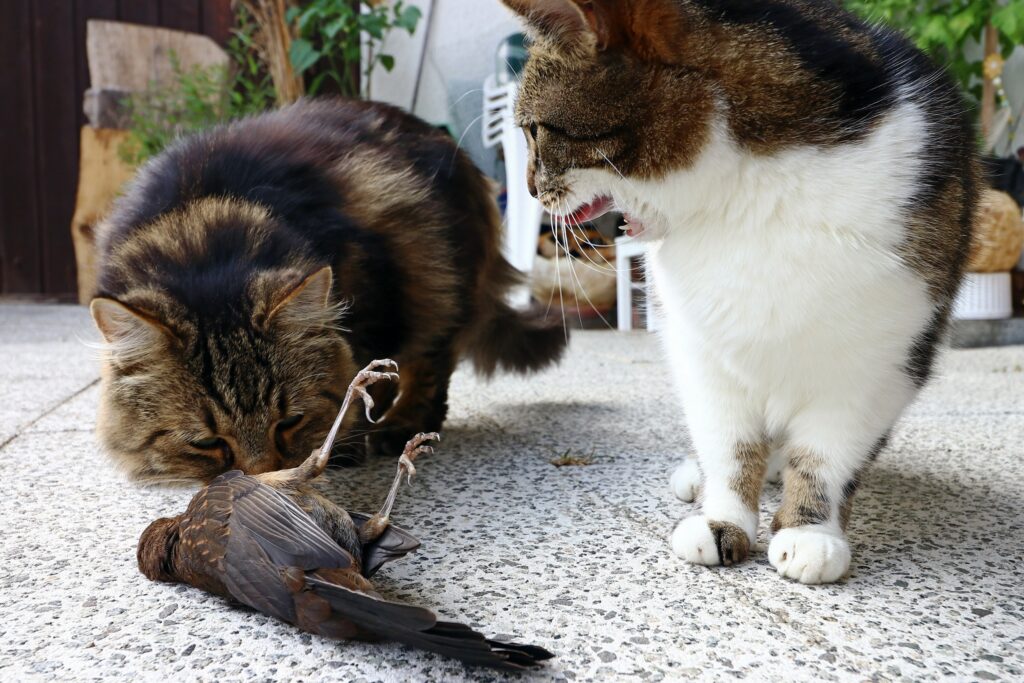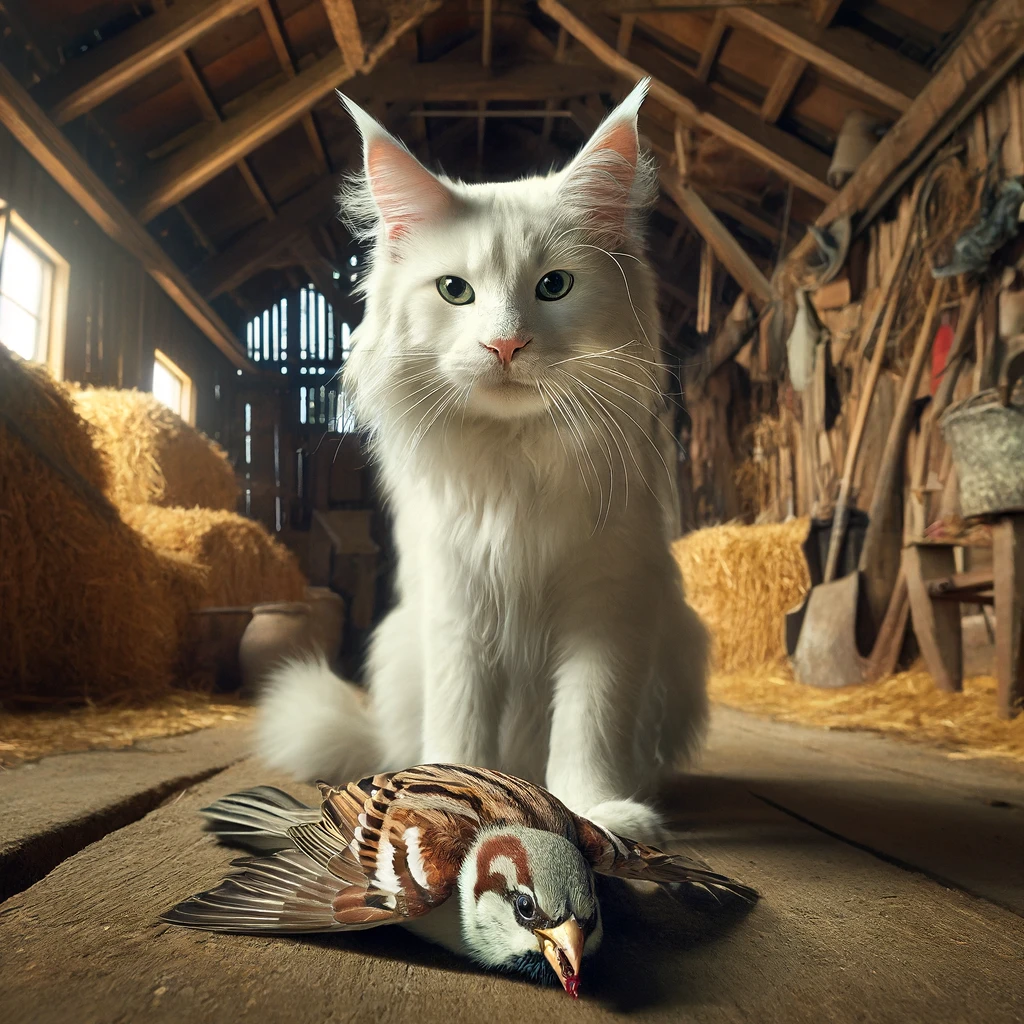Recently, H5N1 influenza virus (most commonly known as “bird flu”) was found in some cats living in dairy farms across the U.S. This virus has also been found in cows on these farms, in states like Texas, Kansas, New Mexico, Michigan, and Idaho.
The U.S. Department of Agriculture is keeping a close eye on these developments, but in the meantime many of us wonder how this could affect our pets and even us.
Why It Matters That Cats Have Bird Flu
Finding H5N1 in cats and cows is a big deal because it shows that H5N1 not only infects many different types of birds but that it can also infect mammals .This means we need to be careful about our pets, especially cats, and how they might catch or spread this virus
Cats getting bird flu isn’t new. In the last couple of years there have been cases in the U.S. (1) and other countries like Poland (2) and Korea (3) where cats were found to have H5N1 infections, presumably from scavenging birds that died from the virus. In one case, pet food made from infected poultry was thought to be the cause, but in general this would be an extremely unusual way for the cats to get infected.
The main takeaway, considering both the most recent infections in barn cats and past reports of infections in cats with outdoor access, is that cats who stay inside are very unlikely to catch this flu. It’s the outdoor cats, the ones who might catch and eat sick birds, who are more at risk.
So, if you’re a cat owner, the most important thing you can do to keep your cat safe is to keep them indoors and away from wild birds.

Bird Flu in Cows and What That Means
The finding of H5N1 in cows is something new and shows the virus is spreading in ways we haven’t seen before. Scientists have confirmed this by looking at the virus’ genes, which tells us the virus is indeed spreading from wild birds to cows.
With cows and now cats catching this virus, farmers, vets, and health experts are all staying alert. They’re taking steps to make sure the virus doesn’t spread more and cause problems for other animals or people.
Despite these cases in animals, the risk to most people is still low. The Centers for Disease Control and Prevention (CDC) says the biggest risk is for people who are around infected animals like these dairy cows and possibly the cats now too.
Also, our milk is safe to drink. The process of pasteurization kills off viruses like H5N1, and any milk from cows that might have the virus is kept out of our food supply. This is just to be extra safe.
What This Means for You
Bird flu isn’t new, but it showing up in cats and cows reminds us to stay sharp and be ready to act if needed. This means keeping an eye on our pets for any signs of sickness and following safety tips from experts.
For cat owners, there’s no need to panic. Just keep your cats inside if you can, and keep everything clean. If you’re a farmer or work with animals, stay informed and follow safety measures to protect yourself and your animals.
In the end, being aware and ready is key. By taking simple steps to protect our pets and paying attention to advice from places like the USDA and CDC, we can all help keep each other safe.
Editors Note: Want to learn more about how bird flu affects cats? Check out this article here!
Sources
(1) Highly Pathogenic Avian Influenza in Mammals: A Case Report of Two Domestic Cats
(2) Influenza A(H5N1) in cats – Poland
(4) USDA Confirms Highly Pathogenic Avian Influenza in Dairy Herd in New Mexico

[Image credit: All images are used under license or with permission]

